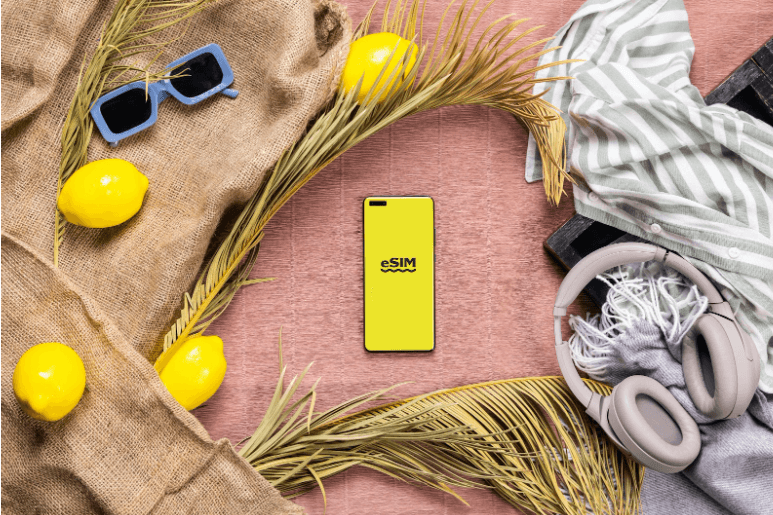Published on November 4, 2025•3 min read
How to Use an eSIM on Your Next Trip (Figabytes Traveler’s Guide)

Ditch roaming shock and SIM-shop hunts. With a Figabytes travel eSIM, you can land, scan, and get online in minutes—keeping your home number active while you use local-rate data abroad. Recent travel explainers highlight exactly these perks: instant setup, dual-line convenience, and fewer chances to lose a physical SIM.
What an eSIM does (in plain English)
An eSIM is a digital SIM already inside your phone. Instead of inserting plastic, you download a profile from Figabytes (via QR or in-app) and your device authenticates to partner networks—just like a regular SIM, but fully remote. Travelers love it because you can keep calls/SMS on your primary line while running data on a separate travel eSIM.
Before you fly: quick checklist
Compatibility: Make sure your phone is unlocked and supports eSIM (iPhone XR or newer; recent Samsung/Pixel and other flagships).
Wi-Fi: You’ll need Wi-Fi to download the eSIM profile.
Plan pick: Choose country, regional, or multi-country data based on your route.
Test it: Install and verify data works before departure (or at least before you leave the airport Wi-Fi). Travel editors consistently recommend this step.
Install & activate (iPhone and Android)
iPhone (including iPhone 17 family)
Connect to Wi-Fi → Settings → Cellular/Mobile Data → Add eSIM.
Use QR Code (or Enter Details Manually) from your Figabytes order.
Label it “Figabytes Travel”.
Set Cellular Data → Figabytes Travel and toggle Data Roaming: On when abroad.
Dual-SIM on iPhone lets you keep your home number for calls/OTPs while using Figabytes for data.
Android (Pixel, Samsung, etc.)
Settings → (Pixel) Network & Internet → SIMs → Add eSIM / (Samsung) Connections → SIM Manager → Add eSIM.
Scan the QR code (or Enter details manually).
Set Mobile data → Figabytes Travel and enable Data roaming when you land.
You can store multiple profiles and switch data lines as you move between countries.
How much data do you need?
Light (maps, messaging, email): ~3–5 GB per week
Moderate (social + photos, some ride-hail): ~5–10 GB per week
Heavy (hotspot, video calls, short video): 10–20 GB+ per week
Journalist guides note that many travelers get by on about 5 GB for light use—scale up if you tether or stream.
Pro tips for smooth travel connectivity
Keep your home line active for calls/SMS; run data on Figabytes to avoid roaming fees.
Label lines clearly (“Personal” vs “Figabytes Travel”) so you always know which is which.
Download offline maps and tickets before takeoff; use eSIM data for live updates only when needed.
Hotspot wisely: Most plans support tethering; it’s a great backup for laptops on the go.
Quick fixes (common issues)
No data after install: Set Mobile Data → Figabytes; add the APN from your order if needed; turn off any VPN; toggle Airplane Mode.
Activation failed: Use Wi-Fi for the download, then restart and try again.
“eSIM already in use”: Most travel profiles are single-use per device—request a replacement if you changed phones.
Bottom line
A Figabytes eSIM gives you the best of both worlds: your home number stays put, while your data switches to local-rate networks the moment you land. Install once, travel easier, and skip the roaming drama. Recent travel columns say the same: eSIMs make trips cheaper, simpler, and safer than juggling plastic cards abroad.